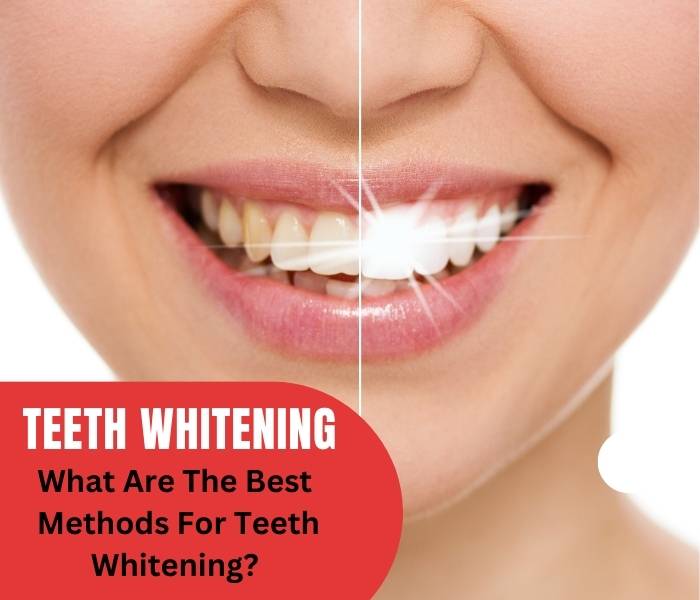
Is having whiter teeth one of your goals this year? There are many options on the market today that promise to give you the pearly whites associated with the smiles of celebrities on glossy magazine covers. But figuring out which treatments are the best for teeth whitening can be a challenge.
Understanding Different Whitening Options
Over-the-Counter Treatments
The first thing many people try to get their smile a few shades whiter is an over-the-counter treatment. You can pick these up relatively easily at your local pharmacy or mega-retailer. They are easy to use and promise great results, but do they really work?
In short, the answer is often no. They usually contain anywhere from 10 to 20 percent carbamide peroxide, which may not be strong enough to make a difference in yellow teeth. In addition, most whitening strips will only cover the front six teeth, leaving the rest of your smile the same.
If you opt for a whitening toothpaste or mouth rinse, you aren’t likely to see many benefits other than those offered by a regular toothpaste.
Some people are drawn in by marketing that advertises brightening your teeth with a light. This has not really been proven to make much of a difference in the whiteness of your teeth. The only time a light should be effectively used to whiten the teeth is after a bleaching agent has been applied, whether that’s in a dental office or at home.
When compared to professional treatments offered by your dentist, these take-home products often don’t provide the desired results. You’ll get much better and more controlled results with take-home treatments or in-office treatments from a cosmetic dentist.
Take-Home Professional Treatments
Many dental patients come to their local clinic having already tried over-the-counter treatments that promise to whiten teeth. Professional take-home options offer significantly better results than store-bought alternatives. These give you the convenience of being able to work on your smile at home, and they’re much more effective than what you would get from a store.
How do these treatments work? First, you will apply a very small amount of gel to a custom-made whitening tray that fits over your teeth. Apply the gel and trays to the teeth for a set period of time and you’ll see results in a few sessions.
Professional In-Office Whitening
If you don’t see the results that you want with take-home treatments, professional in-office whitening provides more powerful options. A dentist will apply a whitening gel to your teeth for about a 20 to 30-minute session.
This treatment can be repeated several times to get you the ideal shade of white for your teeth. Each appointment is kept short, so it’s super simple to work this in-office session into a busy schedule.
The treatment is light-activated with great success. It is a state-of-the-art procedure using the best technology that the dental industry currently offers.
Additional Important Considerations
Understanding Tooth Discoloration
Different types of tooth discoloration respond differently to whitening treatments:
- Extrinsic stains: Surface stains from coffee, tea, wine, or tobacco
- Intrinsic stains: Deep stains from medication, aging, or trauma
- Age-related discoloration: Combined external and internal staining
Factors Affecting Whitening Success
Several factors influence the effectiveness of teeth whitening:
- Initial tooth color and type of staining
- Age and overall oral health
- Previous dental work (fillings, crowns, etc.)
- Commitment to following treatment instructions
- Lifestyle habits and dietary choices
Maintaining Your Results
Essential Dental Hygiene
One of the best ways to ensure that your teeth stay as white as possible is to keep up with your dental hygiene. This includes:
- Brushing twice daily
- Regular flossing
- Professional dental cleanings twice yearly
- Using appropriate whitening toothpaste
- Regular dental check-ups
Avoiding Staining Foods and Drinks
You should also avoid foods that lead to staining. If you do consume these items, brush one-half hour after consumption:
- Coffee and tea
- Red wine
- Curry dishes
- Dark berries
- Beets and other deeply colored vegetables
- Tomato-based sauces
Who Makes an Ideal Candidate?
The ideal teeth whitening patient has yellow teeth instead of white or gray. Be aware that this treatment may not be right for you if you have:
- Numerous dental restorations
- Multiple fillings or crowns
- Extremely dark teeth
- Sensitive teeth
- Gum disease or exposed roots
Professional Tips for Long-Term Success
Before Starting Treatment
- Get a professional cleaning to remove surface stains
- Address any existing dental issues
- Take “before” photos to track progress
- Discuss sensitivity concerns with your dentist
- Create a realistic treatment timeline
During Treatment
- Follow instructions precisely
- Track any sensitivity issues
- Maintain regular oral hygiene
- Stay consistent with treatment schedule
- Avoid staining foods and beverages
After Treatment
- Use maintenance products as recommended
- Schedule regular dental check-ups
- Consider touch-up treatments when needed
- Maintain good oral hygiene habits
- Use a straw for staining beverages
The Science Behind Teeth Whitening
How Whitening Works
- Whitening agents penetrate tooth enamel
- Oxygen molecules break down stain compounds
- Process occurs gradually over multiple sessions
- Results vary based on initial tooth color
- Different agents work at different speeds
Safety Considerations
- Professional supervision ensures proper application
- Reduces risk of gum irritation
- Prevents overuse of whitening products
- Monitors tooth sensitivity
- Ensures even results
Conclusion
Achieving the perfect white smile requires understanding your options and choosing the method that best suits your needs. While over-the-counter products offer convenience, professional treatments provide more reliable and lasting results. Regular maintenance and good oral hygiene habits are essential for maintaining your bright smile long-term.
Key Takeaways
- Professional treatments offer better results than over-the-counter options
- Custom-fitted trays provide more effective at-home treatment
- Light-activated treatments work best with professional bleaching agents
- Regular dental hygiene is crucial for maintaining results
- Different types of staining require different treatment approaches
Remember to maintain your white teeth through good oral hygiene practices and regular dental visits. Consider your lifestyle habits and be prepared to make changes to protect your investment in your smile.

Lifebing is driven by an unrelenting passion for promoting health and well-being, our team is wholly committed to curating exceptional content and immersive experiences.
